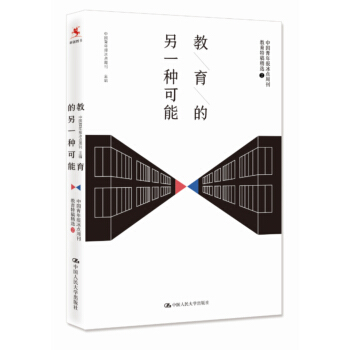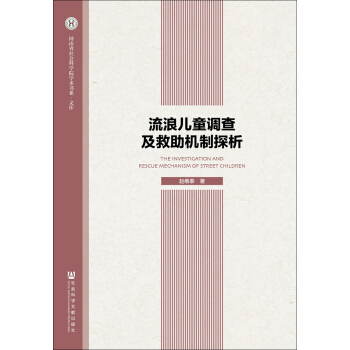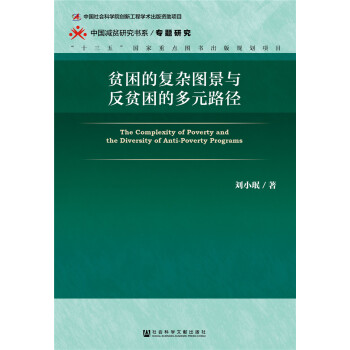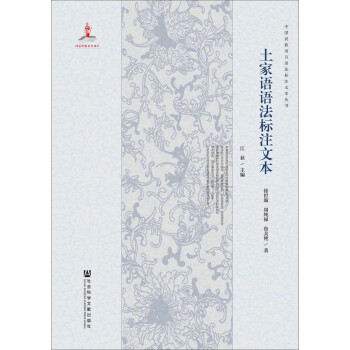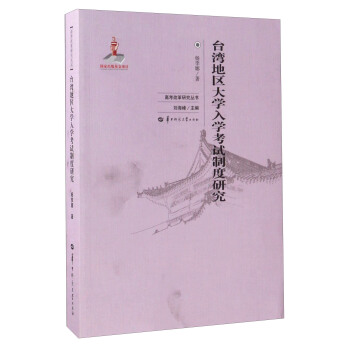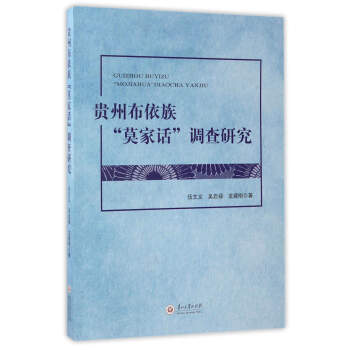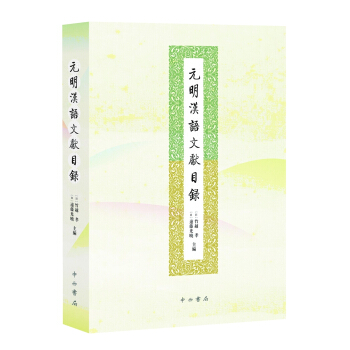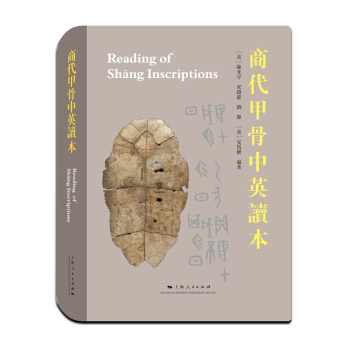

具体描述
编辑推荐
适读人群 :广大读者国内外一般读者对甲骨文了解不多,特别是西方世界的认知远不及对埃及文、苏美文或玛雅文字来的普及。有关甲骨文的英文或其他外文著作,特别是普及性的书籍寥寥无几;即使是专门研究的英语书籍也屈指可数。本书出版正是填补这一空白。本书为国内第一部甲骨文双语释读专业读本,系中美两国甲骨文研究领域专家合作完成的研究著作。此前,未有类似的甲骨文著作在国内外研究领域出现。
内容简介
从商代甲骨文算起,汉字已经被连续使用3500年之久,是人类历史上使用时间较长的文字。然而相对于其它的起源文字,鉴于汉字在人类历史上的特殊地位及在国际范围推广汉字认知教学的重要,甲骨文认读的这一块空白在国内外都有待填补。由于缺乏认读甲骨文字的合适英语课本,所以本书采用手写教材,借鉴读片子的教学方式。基于此编写而成。此书可作为以英语教授甲骨文字的课本,也适于自学甲骨文之用。附有凡例以及相关甲骨图片等,有助于更多国内外更多人藉由对甲骨文字的认知而对中国上古文明产生兴趣。
作者简介
陈光宇,1946年生。美国新泽西州州立罗格斯大学东亚学系教授,罗格斯大学孔子学院董事。在罗格斯大学东亚系从事甲骨文教学及汉语起源研究。师从甲骨文学家金祥恒。发表《儿氏家谱刻辞之“子”与花东卜辞之“子”》(载《纪念王懿荣发现甲骨文110 周年国际学术研讨会论文集》,2009)、《世界四种古文字的起源时空与文字构造》(《古文字研究》,2008)、《商代多伯多臣与肉食者》(载《花园庄东地甲骨论丛》,2006)等多篇专论。
宋镇豪,1949年生,历史学家。中国社会科学院研究员,中国社会科学院学部委员。享受国务院颁发的政府特殊津贴,中国社会科学院有突出贡献专家。第十一届全国政协委员。中国殷商文化学会副会长兼秘书长,中国先秦史学会副会长,中国社会科学院学部委员。主要学术专长是甲骨学及先秦史研究。
精彩书评
NULL目录
前言 Foreword 001
凡例 Explanatory Notes 001
甲骨片名 Title 出處*(Source)
1 《月一正》 001
2 《受黍年》 006
3 《十五犬》 014
4 《今一月雨》 018
5 《自東來雨》 024
6 《旦至食日》 027
7 《三嗇雲》 031
8 《有大雨》 035
9 《遘大風》 038
10 《大驟風》 041
11 《出虹》 045
12 《辛大啟》 049
13 《晹日》 053
14 《東方曰析》 056
15 《禘于北方》 061
16 《燎于東母》 066
17 《新大星》 070
18 《鳥星》 074
19 《日月有食》 079
20 《旬亡禍》 084
21 《月有食》 088
22 《夕風》 091
23 《立中無風》 096
24 《寧風》 099
25 《壱 品》 102
26 《十示率 》 106
27 《自上甲至于多毓》 110
28 《十示又三》 115
29 《甲戌翌上甲》 118
30 《大乙奭妣丙》 121
31 《又歲于兄己》 124
32 《王亥上甲即于河》 127
33 《燎于河王亥上甲》 130
34 《侑于唐》 133
35 《燎于夒》 136
36 《高祖夒》 140
37 《燎于蔑》 143
38 《侑于王恒》 145
39 《燎土豕》 147
40 《侑于黄尹》 150
41 《侑于伊尹》 153
42 《射 以羌》 156
43 《沉三羊》 161
44 《武乙宗祊》 164
45 《侑父丁》 167
46 《翌日劦日燧日》 170
47 《自上甲縁》 173
48 《侑出日侑入日》 178
49 《于妣庚禦婦好》 182
50 《箙旋禦》 185
51 《瀦羌》 188
52 《高祖王亥》 191
53 《祭 》 195
54 《工典其幼》 201
55 《侵我西鄙田》 206
56 《王比望乘伐下危》 214
57 《下上弗若》 221
58 《王征盂方伯炎》 224
59 《在齊次》 228
60 《王來征人方》 231
61 《王往伐》 235
62 《呼視方》 240
63 《共人五千》 244
64 《沚 稱册》 247
65 《王循伐土方》 251
66 《王作三師右中左》 254
67 《令王族追召方》 257
68 《三族》 261
69 《今夕師無震》 264
70 《雉王眾》 267
71 《在澅犬中告麋》 272
72 《田于雞》 276
73 《之日狩》 279
74 《往來亡災》 284
75 《獲象》 288
76 《獲鹿六》 291
77 《逐兕》 295
78 《擒七兕》 298
79 《子央亦墜》 301
80 《王往狩》 307
81 《獲杓八》 311
82 《遘大雨》 314
83 《獲大嵐虎》 317
84 《省牛于敦》 321
85 《往延魚》 326
86 《獲魚三萬》 330
87 《逐岼麋》 332
88 《東土受年》 335
89 《我受黍年》 339
90 《岳河夒》 342
91 《寧秋于.》 344
92 《弗其足年》 348
93 《王令多尹繽田》 352
94 《 田》 356
95 《省黍》 359
96 《求生于妣庚妣丙》 362
97 《婦好娩》 365
98 《疾齒》 369
99 《疾鼻》 372
100 《方其蕩于東》 375
101 《王 》 378
102 《王作邑》 383
103 《帝咎兹邑》 386
104 《帝終兹邑》 389
105 《益寺衷》 393
106 《旨載王事》 396
107 《西使旨》 399
108 《璞周》 403
109 《王省》 407
110 《王其省喪田》 410
111 《今日步于樂》 414
112 《其有來聞》 418
113 《惟美奏》 422
114 《王入于商》 426
115 《祊西饗》 431
116 《唯丁自征卲》 435
117 《歲祖甲》 438
118 《其宜羊》 441
119 《王其逐》 444
120 《寧鳳于四方》 446
附録 一 字彙表 Appendix 1 Vocabulary List 449
附録二 參考書目 Appendix 2 References and Bibliography 468
附録三 干支次序表、干支表 Appendix 3 Gānzhī Table(Table of Sixty Day Cycle) 470
附録四 卜辭所見商王世系與文獻
所見商王世系 Appendix 4 Shāng King List 471
附録五 周祭表 Appendix 5 Five-Ritual Cycle 473
附録六 甲骨文簡介 Appendix 6 Brief Introduction to Oracle Bone Inscriptions 474
附録七 世界四種起源文字簡介 Appendix 7 Brief Introduction to Four Original Writings 480
前言/序言
前 言
殷墟甲骨文发现于 1899 年,至今已有一个多世纪。它的发现证实了商代的存在,使商代的历史变得更加真切和清晰。据目前所得考古资料,甲骨文是中国汉字的最早源头。甲骨文与两河流域的苏美尔楔形文字(Sumerian Cuneiform System),尼罗河流域的埃及圣书体文字(Egyptian Hieroglyphic System)及中美洲的奥梅克—玛雅文字(Olmec-Maya Hieroglyphic System)并列爲人类史上出现过的四个独立起源文字系统。这四种独立起源文字(或称自源文字),都是形、音、义并存的形符文字(或称表意文字)(logographic writing)。苏美尔与埃及文字是拼音文字之先河,汉字则是东亚文明的奠基石。除了汉字外,其他三种古文字早已成爲死文字。汉字是当今唯一存世的起源文字。
在人类历史上,汉字是使用者人数最多的文字,也是世界上唯一迈进 21 世纪电脑时代的形符文字。从商代甲骨文算起,汉字已经被连续使用 3500 年之久,是人类历史上使用时间最长的文字。然而相对於其他的起源文字,国内外一般读者对甲骨文了解不多,特别是西方世界的认知远不及对埃及文、苏美尔文或玛雅文字来得普及。笔者在欧美书店可见到许多介绍埃及、苏美尔、玛雅文字的书籍,但是有关甲骨文的英文或其他外文着作,特别是普及性的书籍寥寥无几;即使是专门研究的英语书籍也屈指可数,例如吉德炜(David N. Keightley) 的 Sources of Shang History(1978,1985)、The Ancestral Landscape (2000)、Working for His Majesty(2012) 及 高 嶋 谦 一(Ken-ichi Takashima) 的 Studies of Fascicle Three of Inscriptions from the Yin Ruins(2010)。鉴於汉字在人类历史上的特殊地位及在国际范围推广汉字认知教学的重要,甲骨文认读的这一块空白在国内外都有待填补。
笔者在台湾大学时曾从金祥恒师习甲骨文,在耶鲁读研究所时,有幸得从张光直、饶宗颐两位先生请益切磋古史。最近数年承涂经诒教授相邀得以在新泽西州立罗格斯大学东亚系开课以英语教授甲骨文及汉字起源。除了识读甲骨文外,也涉及四种独立起源文字的比较。由於缺乏认读甲骨文字的合适英语课本,所以采用自己编的手写教材,教学方式采取当年金先生的方法:读片子。本书即基於这些教材编写而成。此书可作爲以英语教授甲骨文字的课本,也适於自学甲骨文之用。希望更多国内外人士藉由对甲骨文字的认知而对中国上古文明産生兴趣。
本书编写过程中,笔者的学生安马修(Matthew Anderson)将卜辞以甲骨文字体在电脑显示,并整理字汇表,及英文的转録、翻译。郅晓娜博士负责甲骨片的摹写。本书的编写,承吉林大学林澐教授屡次拨冗解疑。罗格斯大学詹富国(Dietrich Tschanz)教授閲读英文稿。中国社会科学院历史所先秦史研究室宋镇豪教授提供宝贵意见,刘源博士仔细审閲全部中文稿,并全程参与编纂工作。在此表示衷心谢意。书中错误,在所难免,希望读者不吝指教。最後要感谢内人刘贻章教授的支持与鼓励。
陈光宇
Foreword
The discovery of inscribed oracle bones and shells in 1899 and subsequent identification of Yīnxū, the ruins of the last Shāng Capital located near ānyáng, Hénán, proved to be a watershed for Early China studies, as these inscriptions represent the most archaic form of Chinese writing (more precisely hànzì 汉字)and the earliest documentary source in China. Almost all of these documents belong to the royal house of late Shāng Dynasty(~1300 to 1100 bce)
These documents survived for so long because they were engraved on animal bones(mostly bovine scapula)and turtle shells(plastron or carapace), hence the name ‘oracle bone inscriptions’(OBI)or, in Chinese, jiǎgǔwén(甲骨文), literally ‘shell bone writing’. The inscriptions engraved on undreds of thousands of bones and shells provide the most precious source for studying early Chinese history. It was based on OBI that Wáng Guówéi(王国维), one of the most eminent Chinese scholars of the early 20th century, was able to identify names of Shāng kings and ascertain the historicity of the figures previously thought to be legendary. By doing so, Wáng confirmed the authenticity of the Shāng history as written by Sīmǎ Qiān(145—86 bce)in the Shǐjì(《史记》 , The Records of Grand Historian).
Oracle bone inscription(OBI), the earliest from of Chinese, together with Egyptian, Mayan, and Sumerian constitute the four writing systems independently invented in human history. All four primary writings are logographic in nature. Among them, only Chinese writing system survives and remains logographic. The study of OBI not only plays a pivotal role in connecting the archeological data to the transmitted textual tradition in China, it is also of great import to the comparative study of origin of writing systems and civilizations. Despite this, OBI has not garnered the attention and popularity in the western world that Egyptian hieroglyphs, Sumerian cuneiform, and Mayan glyph have long enjoyed. In fact, there are only a very few scholarly books in English that focus on OBI(e.g. Sources of Shāng History, 1978, 1985; The Ancestral Landscape, 2000; Working for His Majesty, 2012; written by David Keightley, University of California, Berkeley, and Studies of Fascicle Three of Inscriptions from the Yin Ruins, 2010, by Ken-ichi Takashima, University of British Columbia)and there are virtually no books for the general public in the West to learn about OBI. This can be contrasted with the tens or even hundreds of books on Mayan and Egyptian hieroglyphs and civilizations found on online book selling sites such as Amazon.com.
The author has had the fortune to learn OBI in college and in graduate school from several leading Shāng scholars, including the late Professors Jīn Xiánghéng(金祥恒 , National Taiwan University), Chang Kwang-chi(张 光 直 , Zhāng Guāngzhí, Yale University)and Professor JaoTsung-I(饶宗颐 , Ráo Zōngyí, Yale University). The author has offered a course on OBI (Chinese 165:424, Origin and Development of Chinese Writing)in the Department of Asian Languages and Cultures at Rutgers University, New Jersey for many years. The course material forms the basis of this book. The main body of this book is a collection of 120 pieces of rubbings (tàběn 拓本), mainly from the corpus of Jiǎgǔwén Héjí(《甲骨文合集》), that contain inscriptions covering a wide array of topics including weather, astronomy, kingship, sacrificial ceremonies, rituals, agriculture, hunting, military campaigns and politics. Each rubbing is accompanied by a clear tracing(móběn 摹本), which will be helpful in case the graphs on rubbing are not clearly legible. The direct graph-to-graph transcription, both in digital OBI font and in archaic Chinese script(or lìdìng 隶定) , will help the reader to become familiar with the sequence and direction of reading OBI on the rubbings. Transliteration from OBI graph to English is also provided; so that, by comparing this transliteration with the English translation the reader can appreciate the grammar and sentence structure of archaic Chinese. Finally, translation and annotations are provided in Chinese and in English.
The book is intended to benefit both scholars and lay public who are interested in East Asian civilizations in general and Early China in particular. Readers can use this book to get acquainted with the writing of OBI graphs, just like students learn Mayan or Egyptian hieroglyphs from reading original scripts. In light of the lack of books in English for the study of OBI, it is hoped that this book will fill the need for an accessible introduction to the subject.
During the preparation of this book, I have greatly benefited by discussions with Professors Lín Yún, Jílín University, and Sòng Zhènháo, Institute of History, Chinese Academy of Social Sciences. I am grateful to Dr. Liú Yuán, who has read the Chinese portion of the manuscript, and to Professor Dietrich Tschanz, Rutgers University, who has read and commented on the English part of the manuscript. Both Sòng Zhènháo and Liú Yuán have participated the project from its inception. Dr. Matthew Anderson, a student in my 2006 OBI class, helped with the transcription (OBI font, Chinese and English)and did most of the English translation of the inscriptions. Dr. Zhì Xiǎonà, a student of Professor Sòng, did the tracing work. Without their help, the book could not have been accomplished. It goes without saying that I am solely responsible for any remaining mistakes, big or small. Finally I wish to thank my wife, Alice Liu, for her continuous support and understanding.
Kuang Yu Chen
用户评价
这本厚厚的书,拿到手里沉甸甸的,光是封面那种古朴的牛皮纸质感,就让人感觉回到了遥远的商朝。我本来对甲骨文只是有些模糊的印象,觉得那不过是刻在龟甲兽骨上的古代符号,枯燥晦涩,没想到这本书竟然能把这段历史讲得如此引人入胜。它不是那种一本正经的学术著作,更像是请了一位学识渊博的向导,带着你走进那个充满神秘色彩的青铜时代。书中的插图和还原场景的绘画非常精美,那些抽象的刻符在生动的画面映衬下,似乎一下子就有了生命力。我尤其喜欢其中关于祭祀、战争和农业场景的解读,你能真切地感受到古人对天地鬼神的敬畏,以及他们日常生活的艰辛与智慧。读完之后,我对“殷墟”这个地名的理解不再仅仅停留在教科书的定义上,而是有了一种身临其境的触摸感。这本书成功地架起了一座沟通古今的桥梁,让那些沉默了三千多年的文字,重新发出了声音。
评分我一直有个疑惑,就是当我们谈论“历史”时,究竟是在谈论什么?是宏大的叙事,还是个体命运的碎片?这本书却巧妙地将两者结合了起来。它没有过多纠缠于考古学上的细枝末节,而是聚焦于甲骨文背后那些活生生的人。通过对卜辞中王室成员、官员、甚至奴隶的称谓和活动的记录,我们得以窥见三千年前的社会阶层和人际关系网。这种“微观”的视角,使得冰冷的文字材料瞬间变得立体可感。读到某段关于祈求丰收或禳解瘟疫的卜辞时,你会深刻体会到,在那个技术尚未发达的年代,精神寄托是多么重要。这本书成功地将一个遥远的王朝,拉近到了可以与之进行情感交流的距离,这是一种非常高级的叙事技巧,让人读后久久不能平静。
评分说实话,我是一个对“文物”本身不太敏感的人,很多时候只看到它们是博物馆里的陈列品。但这本书的编排方式,彻底改变了我的看法。它不仅仅是关于甲骨文的知识手册,更像是一部视觉和思想的盛宴。编者似乎非常注重阅读体验,排版设计大气疏朗,字体选择古朴而不失现代感,很多关键概念的解释都配上了精心挑选的同期青铜器或其他出土文物作为旁证,这种跨载体的印证,极大地增强了说服力和沉浸感。我甚至能想象出古人刻写这些文字时的情景——那种在兽骨上凿刻的“咔嚓”声,仿佛就在耳边响起。这本书不仅拓展了我的知识边界,更重要的是,它提供了一种全新的、更具多维度的历史认知方式,让我对古代文明的复杂性有了更深层次的敬意。
评分说实话,我一开始对这类偏向“文献解读”的书籍是持保留态度的,总担心会过于艰深晦涩,让人望而却步。然而,这本书在知识的呈现方式上做得非常巧妙,它完全抛弃了传统教材的刻板结构,更像是一系列精心设计的“迷你纪录片”的文字版。作者似乎深谙如何用最通俗易懂的语言去阐释复杂的文物背景,尤其是那些关于甲骨文的“造字逻辑”部分的梳理,简直是茅塞顿开。比如,书中对“雨”“田”等象形字的演变过程的追溯,配上了清晰的图示对比,让我这个门外汉也能轻松领会古人观察世界的角度。更值得称赞的是,它并没有停留在对单个符号的罗列,而是将甲骨文放在了当时整个社会结构和信仰体系中去考量,展现了这是一个多么完整而自洽的文明体系。每一次翻阅,都有新的发现,这绝对是一本可以反复把玩,常读常新的佳作。
评分我最近正在着手整理一份关于古代神话传说的资料,急需一些可靠的、第一手的史料作为支撑。本来抱着试试看的心态翻开了这本关于商代遗存的读本,没想到里面关于卜辞内容的梳理,简直是为我的研究提供了意想不到的宝贵资源。书中对卜辞的分类和释读,尤其是在反映王室日常决策和重大事件方面的记录,处理得极为细致入微。我特别留意了其中关于天象记录的部分,那种对自然现象的精准观测与记录,远超出了我原有的想象。这本书的价值不在于它提供了多少“结论”,而在于它教会了我们如何“阅读”这些残留的碎片,如何通过这些碎片去重构一个王权神授的时代图景。它的学术严谨性与大众可读性之间找到了一个近乎完美的平衡点,不故作高深,也不流于浅薄,分寸感拿捏得恰到好处。
相关图书
本站所有内容均为互联网搜索引擎提供的公开搜索信息,本站不存储任何数据与内容,任何内容与数据均与本站无关,如有需要请联系相关搜索引擎包括但不限于百度,google,bing,sogou 等
© 2025 book.idnshop.cc All Rights Reserved. 静思书屋 版权所有

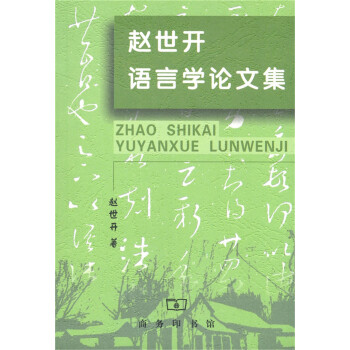
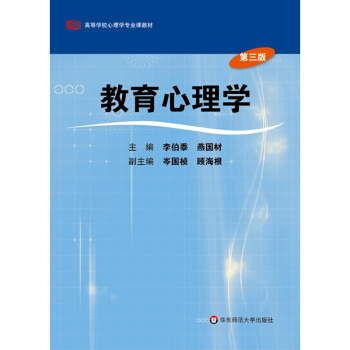


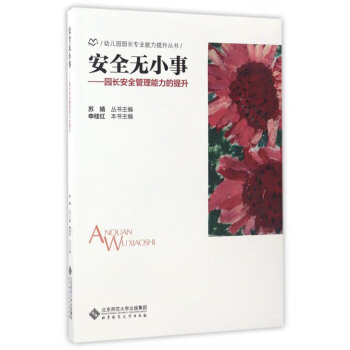
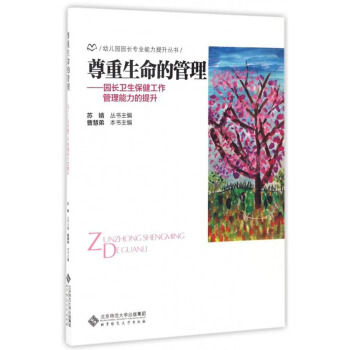
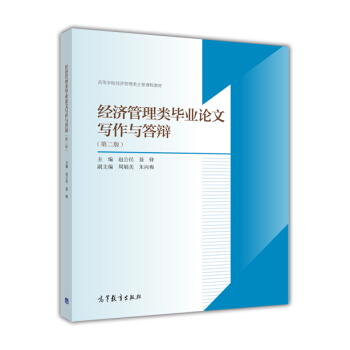
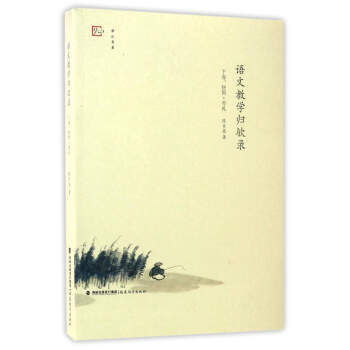
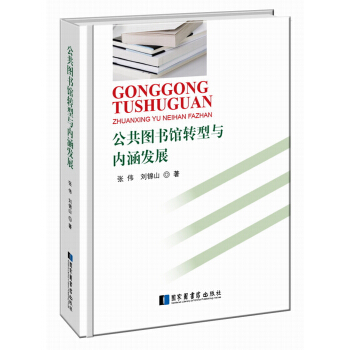
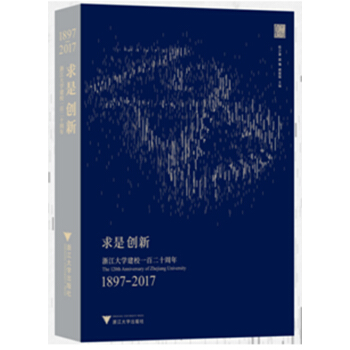
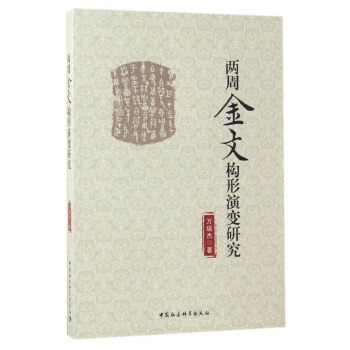
![日本人口老龄化与老年人力资源开发 [Aging Problem and the Development of Elder Human Resources in Japan] pdf epub mobi 电子书 下载](https://pic.tinynews.org/12081028/585ce820N87a693c9.jpg)
